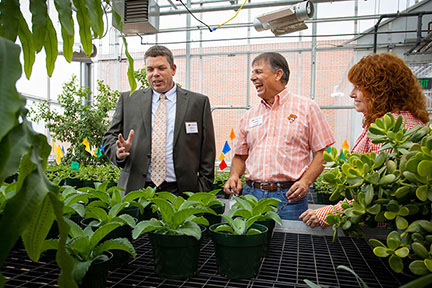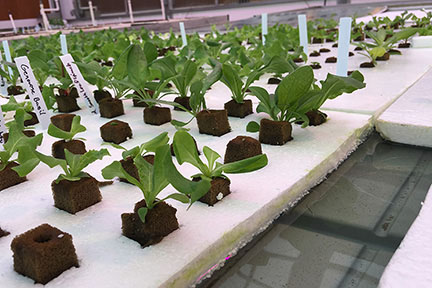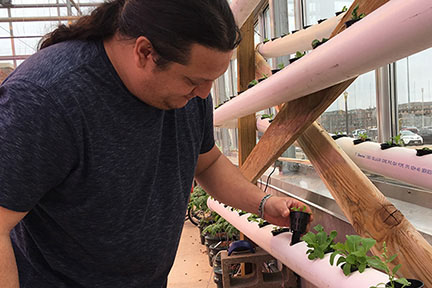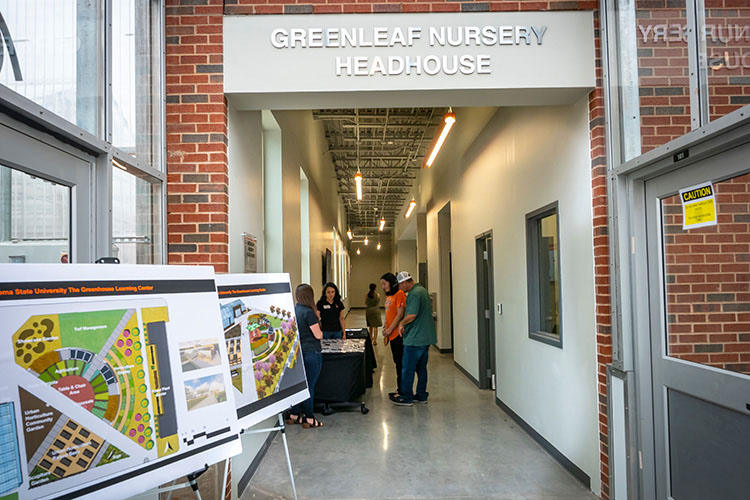Greenhouse Learning Center
Cutting Edge Technology
Each greenhouse is independently climate controlled using an automated micro-grow greenhouse system that continuously monitors conditions like temperature and humidity. Other state of the art features include LED and high pressure sodium grow lights, rolling benches and automatic dark shades.
Student Projects

Display Gardens
The outdoor display gardens include cover crops, raised beds, annual and perennial beds. Cover crops help reduce soil loss and stabilize the soil due to runoff from rainfall, it also helps reclaim soils that have been compacted from construction.

Deep Water Culture
Students are learning and developing deep water culture plants. The plant's roots are suspended in an oxygenated nutrient solution. Soil provides gaps where air is present, thus the water needs to be oxygenated for the plants to survive. Soil also contains macro and micro nutrients for the plants so in hydroponics the oxygenated water is supplemented with nutrients. In a deep water culture, the deeper the water level the more stable the nutrient solution will remain.

Nutrient Film System
Matthew Beartrack seen checking on the nutrient film system. This technique uses a water pump to deliver a constant flow of shallow, nutrient rich solution through the growing area and drains directly back into a reservoir. The growing trays are placed at an angle (supported by a rack or on a bench) to let the nutrient solution flow back into the reservoir.

Give to OSU
Gifts to the Greenhouse Learning Center is part of a larger plan as OSU's effort to become a 21st Century land-grant university. Giving options may be tailored to fit the needs and passions of individual donors.
